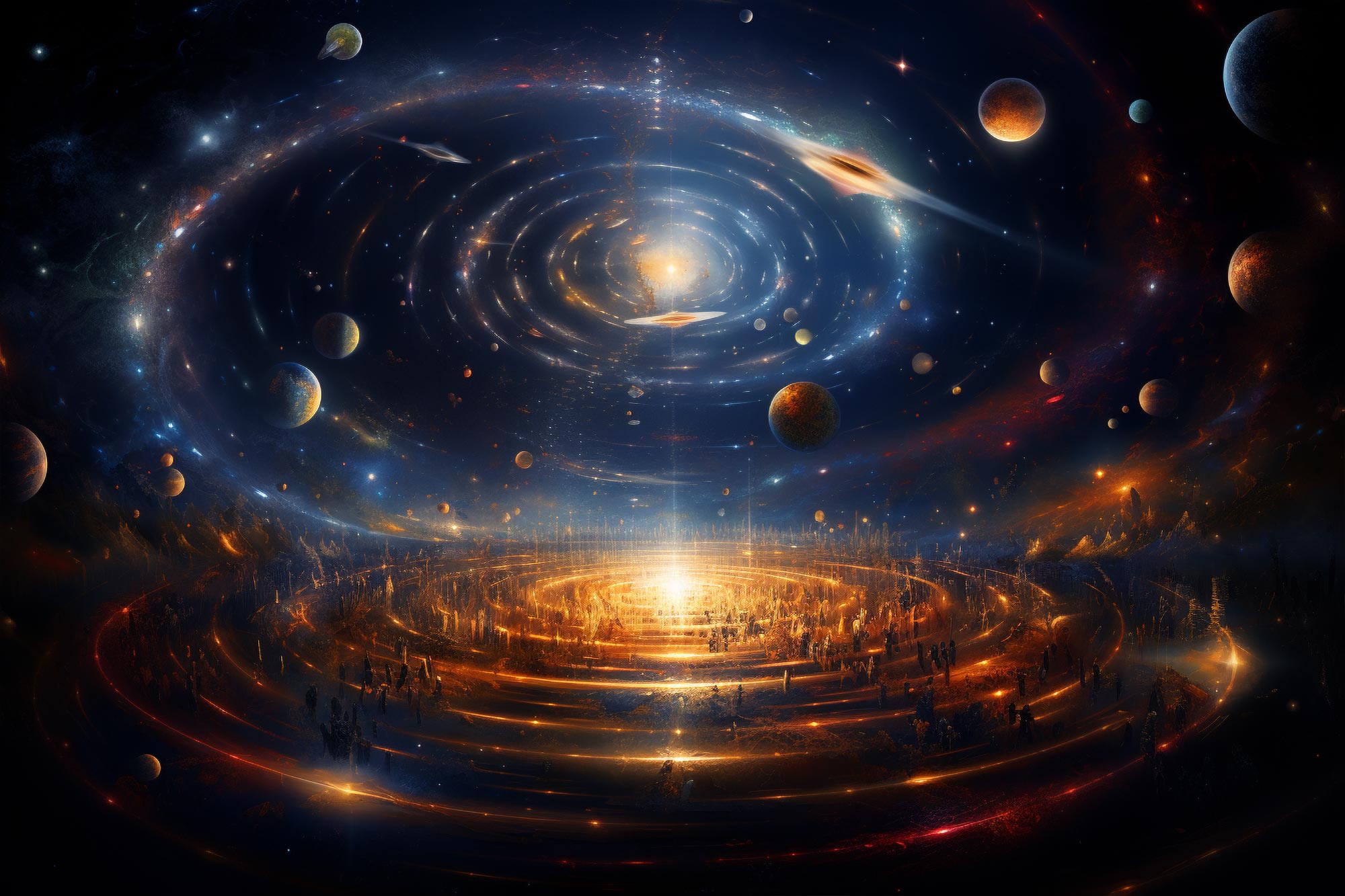Un nuevo estudio sugiere que el universo puede tener 26.700 millones de años, casi el doble de la edad ampliamente aceptada de 13.700 millones de años. El nuevo modelo, que incorpora la teoría de la luz cansada de Zwicky y las constantes de acoplamiento de Dirac en evolución, puede explicar la existencia de galaxias jóvenes y maduras formadas solo 300 millones de años después del Big Bang y proponer una interpretación revisada de la constante cosmológica.
Un nuevo estudio sugiere que el universo puede tener 26.700 millones de años, lo que desafía la estimación ampliamente aceptada de 13.700 millones de años basada en el modelo de concordancia Lambda-CDM.
Nuestro universo puede tener el doble de edad que las estimaciones actuales, según un nuevo estudio que desafía el modelo cosmológico prevaleciente y arroja nueva luz sobre el llamado «problema de galaxias tempranas imposibles».
dice el autor Rajendra Gupta, profesor asociado de física en la Facultad de Ciencias de la Universidad de Ottawa.

«Nuestro modelo recientemente diseñado extiende el tiempo de formación de la galaxia en varios miles de millones de años, lo que hace que el universo tenga 26.700 millones de años, no 13.7 como se estimó anteriormente». Rajendra Gupta – Profesor Asistente de Física en la Facultad de Ciencias de la Universidad de Ottawa. Crédito: Universidad de Ottawa
Durante años, los astrónomos y los físicos han estado calculando la edad de nuestro universo midiendo el tiempo transcurrido desde[{» attribute=»»>Big Bang and by studying the oldest stars based on the redshift of light coming from distant galaxies. In 2021, thanks to new techniques and advances in technology, the age of our universe was thus estimated at 13.797 billion years using the Lambda-CDM concordance model.
The Lambda-CDM (Lambda-Cold Dark Matter) concordance model, also known as the standard model of cosmology, is currently the simplest and most widely accepted model that describes the evolution of the universe from its earliest moments to the present day.
However, many scientists have been puzzled by the existence of stars like the Methuselah that appear to be older than the estimated age of our universe and by the discovery of early galaxies in an advanced state of evolution made possible by the James Webb Space Telescope. These galaxies, existing a mere 300 million years or so after the Big Bang, appear to have a level of maturity and mass typically associated with billions of years of cosmic evolution. Furthermore, they’re surprisingly small in size, adding another layer of mystery to the equation.
Zwicky’s tired light theory proposes that the redshift of light from distant galaxies is due to the gradual loss of energy by photons over vast cosmic distances. However, it was seen to conflict with observations. Yet Gupta found that “by allowing this theory to coexist with the expanding universe, it becomes possible to reinterpret the redshift as a hybrid phenomenon, rather than purely due to expansion.”
“Our newly-devised model stretches the galaxy formation time by several billion years, making the universe 26.7 billion years old, and not 13.7 as previously estimated.”
— Rajendra Gupta, Adjunct professor of physics in the Faculty of Science at the University of Ottawa
In addition to Zwicky’s tired light theory, Gupta introduces the idea of evolving “coupling constants,” as hypothesized by Paul Dirac. Coupling constants are fundamental physical constants that govern the interactions between particles. According to Dirac, these constants might have varied over time. By allowing them to evolve, the timeframe for the formation of early galaxies observed by the Webb telescope at high redshifts can be extended from a few hundred million years to several billion years. This provides a more feasible explanation for the advanced level of development and mass observed in these ancient galaxies.
Moreover, Gupta suggests that the traditional interpretation of the “cosmological constant,” which represents dark energy responsible for the accelerating expansion of the universe, needs revision. Instead, he proposes a constant that accounts for the evolution of the coupling constants. This modification in the cosmological model helps address the puzzle of small galaxy sizes observed in the early universe, allowing for more accurate observations.
On July 7, 2023, the study, “JWST early Universe observations and 𝚲CDM cosmology,” was published in the Monthly Notices of the Royal Astronomical Society (MNRAS) by Oxford University Press.
Reference: “JWST early Universe observations and ΛCDM cosmology” by R Gupta, 7 July 2023, Monthly Notices of the Royal Astronomical Society.
DOI: 10.1093/mnras/stad2032

«Viajar ninja. Alborotador. Erudito del tocino. Experto en alcohol extremo. Defensor de los zombis».







More Stories
Los legionarios realizan dos cruceros separados vinculados a esta característica especial de lujo: informe
La supernova vista por primera vez en 1181 libera filamentos brillantes
SpaceX lanza 20 satélites de Internet Starlink desde California el 30 de octubre